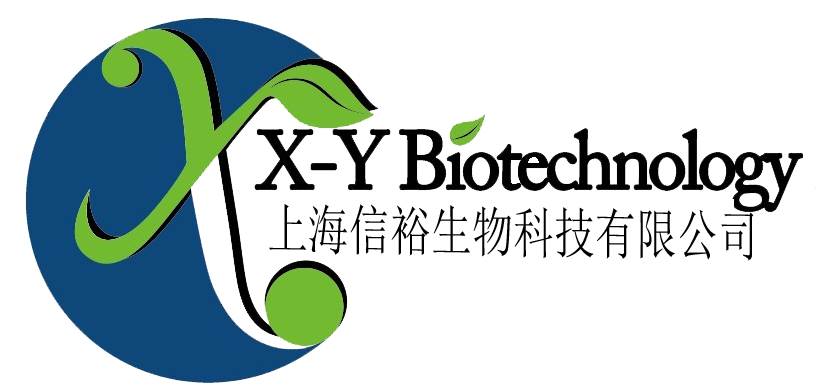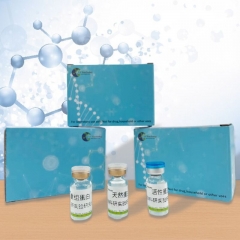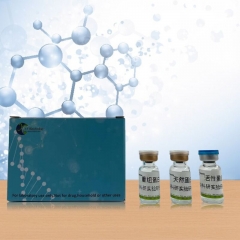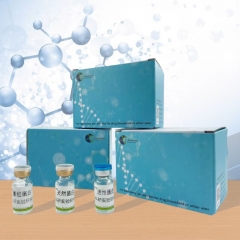Active Plasminogen (Plg)
纤溶酶原(Plg)活性蛋白
[ PROPERTIES ]
Source: Eukaryotic expression. Host: Yeast
Residues: Leu100~Cys352
Tags: N-terminal His-tag
Purity: >95%
Endotoxin Level: <1.0EU per 1μg (determined by the LAL method). Buffer Formulation: 10mM PBS, pH7.6, containing 5% trehalose. Applications: Cell culture; Activity Assays. (May be suitable for use in other assays to be determined by the end user.)
Predicted isoelectric point: 8.0
Predicted Molecular Mass: 30.4kDa
Accurate Molecular Mass: 35kDa as determined by SDS-PAGE reducing conditions. Phenomenon explanation:
The possible reasons that the actual band size differs from the predicted are as follows:
1. Splice variants: Alternative splicing may create different sized proteins from the same gene. 2. Relative charge: The composition of amino acids may affects the charge of the protein. 3. Post-translational modification: Phosphorylation, glycosylation, methylation etc. 4. Post-translation cleavage: Many proteins are synthesized as pro-proteins, and then cleaved to
give the active form. 5. Polymerization of the target protein: Dimerization, multimerization etc.
[ USAGE ]
Reconstitute in 10mM PBS (pH7.6) to a concentration of 0.1-1.0 mg/mL. Do not vortex.
[ STORAGE AND STABILITY ]
Storage: Avoid repeated freeze/thaw cycles.
Store at 2-8ºC for one month.
Aliquot and store at -80ºC for 12 months.
Stability Test: The thermal stability is described by the loss rate. The loss rate was determined by accelerated thermal degradation test, that is, incubate the protein at 37°C for 48h, and no obvious degradation and precipitation were observed. The loss rate is less than 5% within the expiration date under appropriate storage condition.
[ SEQUENCE ]

[ ACTIVITY ]
Plasminogen (PLG) as a zymogen releases plasmin from the liver into the systemic circulation. Plasmin is a serine protease that acts to dissolve fibrin blood clots. Apart from fibrinolysis, plasmin proteolyses proteins in various other systems:It activates collagenases, some mediators of the complement system and weakens the wall of the Graafian follicle (leading to ovulation). It cleaves fibrin,fibronectin, thrombospondin, laminin, and von Willebrand factor. Plasmin, like trypsin, belongs to the family of serine proteases. Besides, Insulin Like Growth Factor Binding Protein 3 (IGFBP3) has been identified as an interactor of PLG,thus a binding ELISA assay was conducted to detect the interaction of recombinant human PLG and recombinant human IGFBP3. Briefly, PLG were diluted serially in PBS, with 0.01% BSA (pH 7.4). Duplicate samples of 100uL were then transferred to IGFBP3-coated microtiter wells and incubated for 2h at 37℃. Wells were washed with PBST and incubated for 1h with anti-PLG pAb, then aspirated and washed 3 times. After incubation with HRP labelled secondary antibody, wells were aspirated and washed 3 times. With the addition of substrate solution, wells were incubated 15-25 minutes at 37℃. Finally, add 50µL stop solution to the wells and read at 450nm immediately. The binding activity of PLG and IGFBP3 was shown in Figure 1, and this effect was in a dose dependent manner.
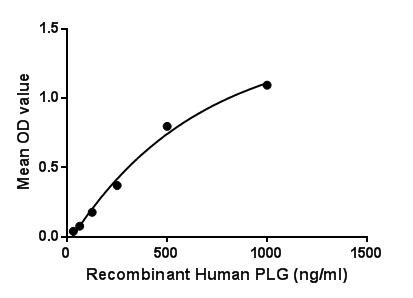
Figure 1. The binding activity of PLG with IGFBP3.
[ IDENTIFICATION ]

Figure 2. Gene Sequencing (extract)
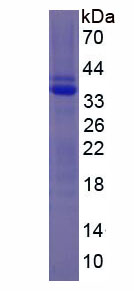
 在线客服1号
在线客服1号



